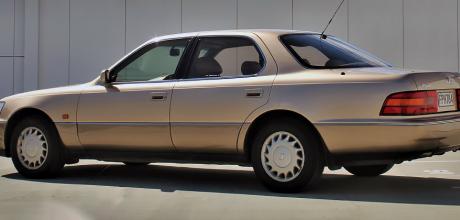Road test 1989 Lexus LS400 XF10
The first LS400 XF 10 to be sold out of Japan or America is still a marvel and still going strong today.
Words and photography Ben Selby
LUXURY BY DESIGN — Feature: 1989 Lexus LS400 XF10
QUALITY BY DESIGN
How do you define luxury? To some it is being blinded with all manner of technological wizardry, from massaging heated seats to being able to activate everything with your voice, be it the driver’s side window or the next track on Spotify. To others, the most exorbitant price tag will dictate how luxurious a car is.
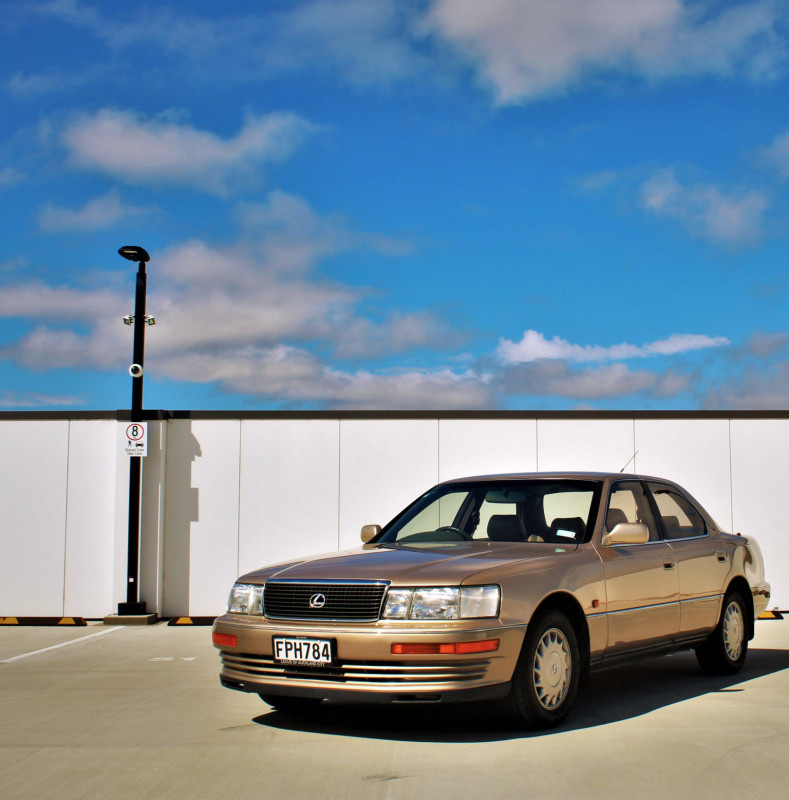
For me, true automotive luxury comes from being transported in unparalleled comfort, refinement, and smoothness of power under complete control. Forget millions of technological toys; if one can be transported here and there without the sensation of moving at all, that is luxury — something that is perfectly encapsulated by the original Lexus LS400. It was the first truly global luxury car from Toyota, and one that made the big luxury brands take notice.
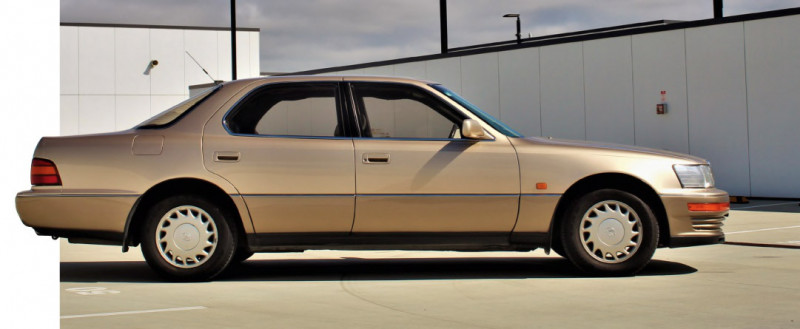
Toyota was no stranger to the luxury game; its Crown and stately Century luxury saloons were selling well locally. However, it had no luxury car for the global stage. Toyota chairman Eiji Toyoda saw the success of Mercedes-Benz and BMW amongst the newly emerging yuppie set during the early 1980s. The US market was very lucrative, especially as the recent US import tax on Japanese cars had hurt Toyota sales stateside. Toyoda decided then and there that Toyota would have not only a piece but the whole luxury pie.
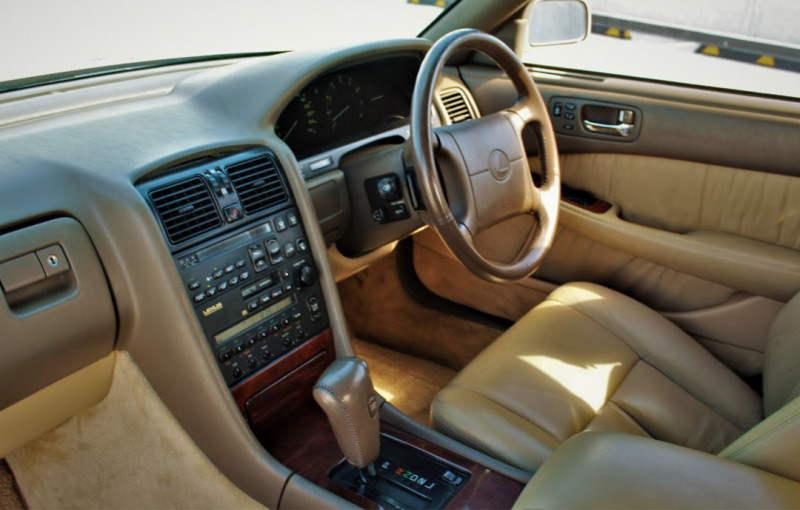
In 1983, Toyoda gathered all the top brass of Toyota’s marketing, management, and engineering departments and issued the order: “We are going to build a car that is better than the very best in the world.”
This became the start of Toyota’s Circle F flagship project, a car that had the BMW 7-series E32 and mighty Mercedes-Benz S-class W126 firmly in its sights. In 1985, 20 Toyota designers and engineers were sent to America to immerse themselves in the luxury buyer set. Everything was noted: what they wore, where they lived, where they shopped, and, most important of all, what they drove.
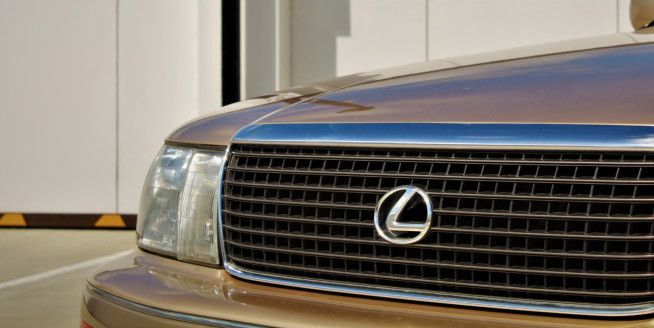
The project’s chief engineer, Ichiro Suzuki, set targets for his team. The new Toyota luxury car would have to do the equivalent of 250kph, have a drag coefficient of .28, get 22.5mpg, and be able to travel at 100kph emitting no more than 58 decibels of noise.
A DYNASTY IS BORN
A tall order indeed. It is said Suzuki was such a perfectionist that any changes — which could be as small as adding a mere 10 grams to the car’s weight — would have to be signed off personally by him. However, 450 prototypes, four million kilometres of testing, and an investment of $1 billion later, the final car was signed off and ready to be unveiled — with not a Toyota badge in sight.
Toyoda was convinced that, since this car would be the flagship luxury Toyota for a global market, an entirely new brand name should be used to distance the newcomer from more mainstream models. The name originally chosen was Alexis, but, when someone made the connection between the name and Joan Collins’ rather disliked character on the TV series Dynasty, this was quickly changed. The team had a play around with the wording, and the final name was decided: Lexus.
The Lexus LS400 made its debut at the 1989 North American International Auto Show in Detroit, and overnight the luxury segment of the industry was virtually turned upside down. Traditional luxury carmakers suddenly had to rely much more heavily on their distinguished heritage and traditional values to discount direct comparison with the upstart Asian.
Lexus also broke new ground when it came to customer service. Along with a comprehensive new dealer network, Lexus would treat the customer like royalty, even at home. If you lived outside Auckland — which was the location of the first New Zealand Lexus dealer — technicians would fly out to wherever you lived, do the service, and fully groom the car for you. Courtesy cars were shipped to your local town if needed.
SERVICE WITH A SMILE
Some dealers in America even had a camera system that recognised your car’s registration plate and sent all your personal information to the front desk computer, so the customer service representative could address the customer by name. All dealers had to sign a ‘Lexus Covenant’, stating they would uphold this new standard in customer service. That was probably fairly easy to do as they would be seeing far fewer grumpy customers than their competitors arriving with faulty bespoke cars.
Back to the Lexus: the LS400’s powerhouse came courtesy of a new all-aluminium four-litre naturally aspirated 32-valve V8 engine. Power was rated 186kW and torque at 353Nm. Designated by Toyota as the 1-UZFE, it quickly became an icon as being one of the smoothest and heartiest V8s ever produced by a mainstream manufacturer.
Lexus showcased just how smooth it was by famously placing a pyramid of champagne glasses on the bonnet of an LS400 and running the car on a rolling road at speeds in excess of 220kph for a TV commercial. Thanks also in part to the 1-UZFE’s hydraulic mounts, the glasses stayed in place while the message “The relentless pursuit of perfection” was splashed on the screen. Mated to the 1-UZFE was a four-speed automatic transmission with overdrive. The engine was tilted slightly to ensure its link with the drivetrain to the rear wheels was completely straight, and that further reduced noise and vibration.
The transmission also packed a unique feature called ECT-i, which tailored performance to suit your driving style, allowing for pauses between each shift. This did away with any transmission noise, and there was next to no vibration. Underneath, double wishbone suspension and gas-filled shock absorbers ensured the smoothest possible ride at any speed. Rather than try to blind customers with a long list of options, the LS400 decided to go all in. It was available as a single spec. Lexus maintained you got the very best from the get-go. Every component, even such esoterica as the galvanised seat frames, was literally tested to destruction to ensure the Lexus would be at least as reliable and durable as Toyota’s mainstream models.
‘TOYOTA LEXUS’
The LS400 you see here is a first-generation XF10 and part of Toyota/ Lexus New Zealand’s own stable, having been on display in its Thames plant for the past two decades. What makes this example unique is that it was the very first LS400 to arrive in New Zealand, and the first to be sold outside Japan or America. As the brand was still relatively unknown to NZTA, the car was registered as a 1989 Toyota Lexus, and still is.
New Zealand’s first ever Lexus also had a starring role when Auckland hosted the 1990 Commonwealth Games, very nearly becoming the car to ferry Her Majesty Queen Elizabeth II to the opening ceremony.
However, the story goes that the Queen’s security team insisted on an armoured Bentley as transport after an incident with protestors at Waitangi when Her Majesty was seated in the open back of a Toyota Hilux. As a result, the LS did not become a royal carriage, but it did transport our own Dame Kiri Te Kanawa to the closing ceremony of the games.
Some might say the LS400 lacks the flair or cache of its German or upmarket British contemporaries, and perhaps it is a little too anodyne in appearance, but being charitable, you could attribute this to the exercise of restraint, as good taste would dictate. However, the original Lexus still has presence and, in my view, its pared-back simplicity still adds up to a statement car. This tan colour scheme — both inside and out — and a key yuppie symbol of success at the time: a built-in phone — couldn’t be more evocative of the period. Sure, this car has a few stone chips and scratch marks but, overall, its original condition shows just how successful Toyota was in setting and maintaining the highest standards of quality and durability.
BUILT TO LAST
The mileage shows close to 241,000kms. As we know from Toyota, that’s child’s play for this engine. Reports of these cars racking up more than a million miles in the US are not unknown. This pre-VVT version is preferred for its stronger valve stems by tuners, who add turbos to the four-litre mill in hot Toyota Soarers and the like.
However, raw horsepower is far from the point in this car. Slide inside and you sink into some of the most comfortable seats imaginable. For a 30-year-old Japanese saloon, it is actually more comfortable than a lot of modern cars. It is all original inside, too. Features such as electric memory seats and electric steering wheel adjustment are commonplace today, but it was pioneering tech when Lexus included them on the LS400. Both still work flawlessly after 30 years.
All the switch-gear is within easy reach, and every button still works exactly the way it would from new. In fact, it is said that a Lexus employee on the production line had the sole job of testing every toggle switch and button to ensure it made exactly the required clicking noise.
Fire up the 1-UZFE and the only noise you hear is the faintest V8 background murmur. It is uncannily quiet. Even when standing outside at idle, this is one V8 barge that is neighbourhood friendly. Ahead of you is the illuminated instrument cluster complete with ‘lightsabre’ dial needles. The dials are still clear to read today. This signature feature was yet something else the Germans took some time to emulate.
Moving off, the throttle and brakes require a solid push to get up to speed or bring things to a halt, but it is hard not to conclude this, too, is measured and deliberate. The LS was all about power under control, and this completely standard LS400 is almost flawless at that. Even by today’s standards, the V8 offers good torque delivery and you seldom need to venture above 2500rpm to make some decent progress.
SURREAL DEAL
It’s a car that encourages you to drive with care, attention, and finesse. Little movements of the wheel, the merest suggestion of throttle and brakes, and the LS400 is an utter delight. The ride has to be one of the most composed and relaxing of any luxury car of recent years. Thanks to that clutch slippage feature, the auto box is just as silky smooth. It really does feel as if you are travelling without moving.
The 11m turning circle isn’t the cutest, but once you leave those tight areas, the LS shrinks around you. On motorway cruises at 2300rpm the 1-UZFE becomes a smidgen louder, but surely by only a few decibels. It’s a sweet rumble, too, as it happens. I couldn’t resist a kick down into power mode to rev it out a bit.
Do this and the bonnet rises with an imperious gesture, and, as those numbers on the rev counter increase, you are joined by a simply terrific V8 soundtrack. It’s easy to see why some owners of LS400s and its Toyota-badged sister car, the Celsior, feel obliged — regardless of Toyota’s efforts to impose peace and quiet — to turn this exhaust up to full by fitting straight pipes.
In the corners, the Lexus also manages to tread the fine dividing line between sporty handling and a plush ride. It doesn’t wallow about anything like as much as you might expect, preferring instead to keep reasonably level. It just keeps on impressing.
Some might accuse the original Lexus LS400 as being rather too conservative to overcome the lack of heritage and prestige usually associated with a premium luxury car. However, the passage of time has granted the Lexus brand some measure of reputational respect and a decent, if still comparatively short, heritage — and I dare anyone to drive one and not get out feeling impressed, even when measuring it against more modern machinery.
The fact that you can pick up a decent Lexus LS400 for less than $10,000 these days is still, to me, mind-boggling. It’s so much car for the money and, provided it’s been well looked after, it is sure to give you years, if not decades, of trouble-free luxury motoring.
The Lexus LS400, in my view, is an utter delight and already a classic. It is a car that redefined the luxury car buying experience and the market as a whole. Surely it won’t be long before the cars really start to accelerate in value.
The ride has to be one of the most composed and relaxing of any luxury car of recent years. Superbly smooth V8 offer convincing quality Genuine upper echelon accessory.
TECHNICAL DATA 1989 Lexus LS400 XF10
- Engine: 90-degree V8
- Capacity: 3969cc
- Bore/stroke: 87.5/82.5mm
- Valves: DOHC, four valves per cylinder
- Compression: 10:1
- Max Power: 186kW (250bhp) @ 6500rpm
- Max Torque: 353Nm (260ftlb) @ 4400rpm
- Fuel supply: Toyota fuel injection
- Transmission: Four-speed automatic, RWD
- Suspension: F/R independent coil springs with double wishbones and anti-roll bar / independent with upper wishbone and antiroll bar
- Steering: Power-assisted rack and pinion
- Tyres: 225/60 R16
- Brakes: Servo-assisted vented discs front and rear, ABS
- Length: 4996mm
- Width: 1819mm
- Height: 1405mm
- Wheelbase: 2814mm
- Track F/R: 1565/1565mm
- Weight: 1705kg
- Drag coefficient: 0.29 CX
- 0–100kph: 6.9s
- Max speed: 249kph (155mph)
- Standing quarter-mile: 15.9s
Superbly smooth V8 offer convincing quality Genuine upper echelon accessory.
Material choice, like all other elements of design, ensure the interior lasted as well as its illustrious competition.
The LS400 decided to go all in. It was available as a single spec. Lexus maintained you got the very best from the get-go.
Understated design has aged well New badge built on a strong foundation. It is said Suzuki was such a perfectionist that any changes — which could be as small as adding a mere 10 grams to the car’s weight — would have to be signed off personally by him.


